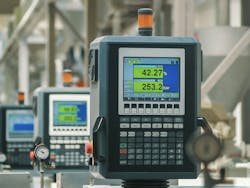Wind River Streamlines Software for the Industrial Internet of Things
Wind River sells software used in billions of electronic devices from thousands of customers serving the aerospace, automotive, defense and industrial sectors. Under every hood, on every factory floor and in every airplane are countless lines of code, many of which are running on top of the company's operating systems. Customers use its software to make sure that the airbag stuffed in a steering wheel, for instance, functions like it's supposed to.
As the use of artificial intelligence becomes a part of the embedded industry's toolbox, the company is trying not to neglect all the critical software in cars, factories and airplanes, which can be decades old. Wind River plans to start selling tools that continue to run legacy software—a program that controls a car's brakes, for instance—while more advanced applications—such as automatic emergency braking or lane change assist—are developed and adopted.
For customers trying to establish themselves in the industrial Internet of Things, Wind River's tools are designed to make embedded development a little easier. To help them harness huge amounts of data from swarms of electronic devices, Wind River is taking some pages from the cloud computing playbook. The company wants its customers to do things like use microservices to deploy applications in containers for faster development.
Its latest product, the Helix Virtualization Platform, which was announced at Embedded World last week, can be used to combine multiple operating systems so that they can run at the same time without interfering with each other. Wind River put together its proprietary real time operating system, VxWorks, which features higher reliability and lower latency, with embedded Linux. But any other guest operating system can be supported, including Windows.
"The industry is moving in a direction of heterogeneous systems," Jim Douglas, Wind River's chief executive, said in a statement. "Helix Platform offers the best of both worlds." He added that the product "is a critical building block for how we will continue to accelerate the evolution from automated devices towards more intelligent and autonomous systems." The use of one operating system over another depends on whether an application needs to be isolated.
Using virtualization, legacy code running on top of the VxWorks operating system—an algorithm that controls an industrial robot, for instance—can be protected to make sure it never fails. Other applications that are not similarly safety-critical—a user interface based on Windows running on the robot's control panel or an artificial intelligence program based on Linux to detect malfunctions ahead of time—can be upgraded without any downtime.
Consolidating all these applications also means consolidating all the general purpose processors that used to run them. Wind River's Helix Platform supports NXP's Layerscape, Xilinx's Zynq Ultrascale, Intel's Xeon and other multicore computer chips that can spread out applications by moving them into different cores. Wind River said legacy code can be moved into another device without any modifications. That could help cut development costs.
“Our belief is that moving intelligence to the edge will require heterogeneous systems, both hardware and software," said Vice President of Product Michel Genard. "You could have a workload that’s a safety function, maybe something that must adhere to a regulatory requirement. That requires a particular type of operating environment,and potentially specific hardware. Helix Platform supports multiple criticality and multiple operating environments."
"You can create an environment that lets you map the right type of operating environment for the right workload. We also know that many users have legacy equipment that they want to maintain and use, such as operating systems they built years ago." Wind River, which sells software to industrial heavyweights like Kuka Robotics and Rockwell Automation, also said the platform follows functional safety standards, including ISO 26262 and ICE 61508.
The Helix Platform lets customers carry over their legacy code every time they need to update their hardware, software or cloud computing service. "Today’s Internet of Things system development requires more sophisticated and streamlined software," said VDC Research's Chris Rommel, adding that the product "targets this need, providing a flexible platform capable of addressing the complex and heterogeneous compute requirements of tomorrow’s devices.”
Last year, Wind River completed the buyout separating it from Intel for the first time in nearly a decade. The Alameda, California-based company, which has over 1,000 employees, has returned to its roots in embedded computing. The company has also started to invest more in packaged software that can run on computer processors other than Intel's. Wind River also has more space to grow as an independent company, said Douglas.
“Our needs were so different, our go-to-market strategies were so different, and success was measured so differently,” Douglas told Electronic Design last year. “There were strategic investments we made for Intel that didn’t exactly line up with what we were trying to achieve." When Intel weighed "an investment dollar in silicon versus an investment dollar in our commercial operations, silicon was going to win out every time,” he added.
About the Author
James Morra
Senior Editor
James Morra is the senior editor for Electronic Design, covering the semiconductor industry and new technology trends, with a focus on power electronics and power management. He also reports on the business behind electrical engineering, including the electronics supply chain. He joined Electronic Design in 2015 and is based in Chicago, Illinois.

